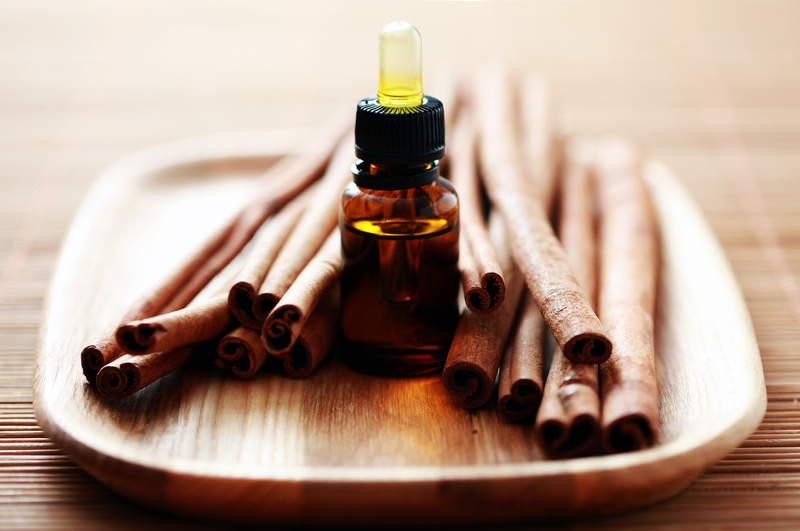Revitalize Your Precious Pieces with These Cleaning Methods
Posted on 18/08/2025
Revitalize Your Precious Pieces with These Cleaning Methods
Are you searching for effective ways to bring back the sparkle and life to your cherished items? Revitalize your precious pieces with these cleaning methods that not only promise a brilliant shine, but also ensure the longevity and value of your treasures. Whether it's your beloved jewelry, antique furniture, or family heirlooms, this comprehensive guide will walk you through safe and proven cleaning techniques. Discover the best cleaning methods and maintenance tips to restore beauty without risk of damage.
Why Revitalize Your Precious Pieces?
With time, even the most treasured possessions begin to lose their luster and vibrancy. Daily wear, environmental contaminants, and simple neglect can lead to tarnish, dullness, and degradation. By using the right restoration and cleaning methods, you can not only bring back the brilliance but also enhance the lifespan and value of your items.
- Increase Longevity: Proper cleaning preserves the structural integrity of valuable possessions.
- Restore Beauty: Remove grime, tarnish, and buildup for a gorgeous, like-new finish.
- Protect Investments: Routine maintenance protects against irreversible damage and loss of value.

Understanding Your Treasured Items
Before jumping into cleaning routines, it's important to understand the specific requirements of different materials. Different precious pieces--whether gemstones, metals, woods, or textiles--require tailored cleaning approaches to prevent accidental damage.
Categories of Precious Pieces
- Jewelry: Gold, silver, platinum, diamonds, pearls, and other gemstones
- Watches: Luxury, antique, and modern mechanical watches
- Antique Furniture: Wooden chairs, tables, cabinets, and inlays
- Heirloom Textiles: Quilts, clothing, lace, and tapestries
- Collectibles: Coins, stamps, figurines, and memorabilia
Recognizing what each item is made from allows you to select the best cleaning solution for that particular piece.
Essential Precautions Before Cleaning
Before you revitalize your treasures, it's crucial to keep the following precautions in mind:
- Test a Small Area: Rub or apply the cleaner to a hidden spot to check for adverse reactions.
- Avoid Harsh Chemicals: Steer clear of bleach, ammonia, and any abrasive substances that may degrade your item.
- Use Soft Materials: Always use soft cloths, microfiber towels, and soft-bristle brushes.
- Read Professional Advice: When in doubt, consult an expert before proceeding with specialized cleaning methods.
Jewelry Cleaning Methods Made Easy
Jewelry tends to attract lotions, skin oils, perfume, dust, and environmental pollutants. Shine and brilliance can return with these simple steps:
1. Gentle Soap and Warm Water
- Mix a few drops of mild dish soap with warm (not hot) water.
- Soak your precious jewelry for 10-20 minutes.
- For rings and intricate settings, use a soft toothbrush to dislodge grime.
- Rinse thoroughly with clean water and dry with a lint-free cloth.
2. Baking Soda Paste for Tarnished Silver
- Make a paste using 3 parts baking soda to one part water.
- Gently rub the paste onto the silver using a non-abrasive cloth.
- Let sit for 2-3 minutes, then rinse and buff dry.
3. Ammonia-Free Commercial Jewelry Cleaners
When dealing with high-value gemstones or intricate metals, use reputable ammonia-free commercial cleaners. Always check labels and instructions for suitability.
4. Special Note for Pearls and Opals
These fragile gems only require a wipe with a soft, slightly damp cloth. Avoid soaking or exposing them to commercial chemicals.
How To Revitalize Watches
Watches should be cleaned carefully, as moisture and harsh chemicals can damage internal mechanisms.
Cleaning Watch Cases and Bands
- Use a slightly damp microfiber cloth on metal and ceramic cases.
- Leather bands may be wiped with a barely damp cloth and conditioned with leather cleaner.
- For water-resistant watches, a soft brush and mild soap can clean the band and case.
- Never submerge a watch unless it's rated as waterproof.
Professional Servicing
Have valuable or vintage watches inspected and cleaned by professionals every few years to preserve their function.
Antique Furniture: Safe Restoration & Cleaning
Antique wood deserves special care to avoid stripping, warping, or discoloring finishes.
1. Dusting and Dry Cleaning
- Start with a soft, dry cloth or feather duster to remove surface dust.
- Use a vacuum with a brush attachment for hard-to-reach crevices.
2. Cleaning with Diluted Soap Solution
- Mix a few drops of gentle wood soap or oil soap with water.
- Dampen a soft cloth (not wet!) and wipe down surfaces. Dry thoroughly with a clean cloth.
3. Restoring Shine
- Use high-quality furniture polish or a mix of equal parts olive oil and vinegar.
- Buff gently along the grain to restore the wood's natural shine.
4. Handling Delicate Veneer or Inlay
Never pour water or liquid directly onto antique surfaces. Test any product in a hidden area, and consult a professional for valuable or fragile items.
Heirloom Textiles & Fabrics: Cleaning Wisdom
Preserving family quilts, lace, and delicate garments can be challenging. Here's how to restore these precious textiles without harm.
1. Hand Washing with Mild Detergent
- Fill a basin with lukewarm water and a teaspoon of mild baby shampoo or detergent.
- Gently submerge the fabric and agitate lightly--never scrub or twist.
- Rinse thoroughly and lay flat to air dry. Never wring out heirloom fabric.
2. Spot Cleaning for Stubborn Stains
- Test spot with a cotton swab dipped in diluted vinegar or hydrogen peroxide (for white fabrics only).
- Blot gently and rinse; avoid saturating fabric.
3. Storing Properly
After cleaning heirloom pieces, wrap in acid-free tissue and store in a cool, shaded environment.
How to Clean and Restore Collectibles
From coins and stamps to vintage toys, collectibles have unique needs to ensure you don't destroy their value while you revitalize them.
Coins & Stamps
- Never clean valuable coins aggressively--use a dry brush or compressed air for loose debris.
- Stamps should only be handled with tweezers and never exposed to liquids.
Figurines & Memorabilia
- For porcelain or ceramic figurines, dust with a soft brush and wipe gently with a damp cloth.
- Plastic toys can be cleaned with mild soap and water, but avoid immersing anything with moving parts or batteries.
General Tips for Maintaining Precious Pieces
- Regular Maintenance: Clean items regularly in a gentle manner to prevent heavy buildup.
- Proper Storage: Store in dry, padded, and shaded environments to minimize exposure to elements.
- Limit Direct Sunlight: UV rays fade textiles, paper, and some finishes.
- Rotate Display Items: To prevent uneven fading and wear, rotate your display periodically.
- Handle with Care: Always handle valuables with clean hands or gloves to avoid grime transfer.
Frequently Asked Questions
Can I use vinegar as a universal cleaning solution?
Although vinegar is effective on some surfaces, avoid using it on precious stones, pearls, antique woods, and delicate fabrics as it can cause deterioration.
How often should I clean my jewelry?
For everyday wear items, a gentle cleaning every 1-2 weeks keeps them looking fresh. Deep professional cleaning is recommended every 6-12 months.
Is it safe to clean antiques myself?
Simple dusting and light cleaning are usually safe. For significant restoration or valuable pieces, always consult a professional specialist.

When to Consult a Professional
If your precious item shows structural damage, unusual staining, or is exceptionally valuable, trust the experts. Professional conservators can restore and preserve items using advanced, non-invasive techniques.
- Fine art
- Antique jewelry with loose settings
- Watches with mechanical issues
- Delicate handwoven textiles
- Rare books and documents
Conclusion: Enjoy Your Revitalized Treasures
When you revitalize your precious pieces with these cleaning methods, you're not just restoring their aesthetic appeal--you're also safeguarding their legacy for generations to come. With regular care and the right gentle techniques, your heirlooms, jewelry, and collections will continue to shine for years.
Remember, understanding your item's unique material and value is the key to selecting an effective, safe cleaning process. Take care, proceed patiently, and celebrate the renewed beauty in all your precious possessions!



